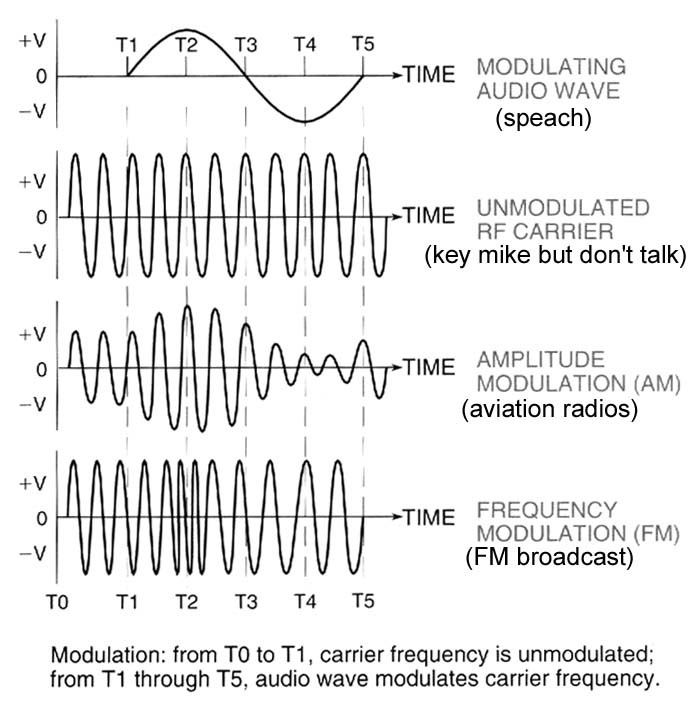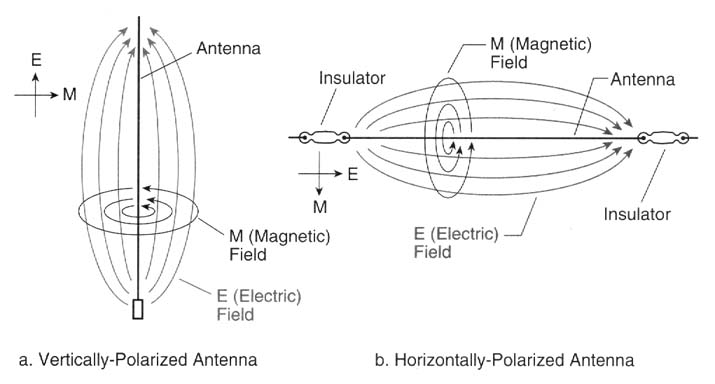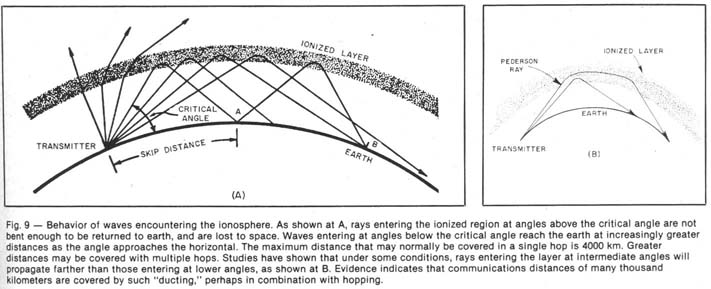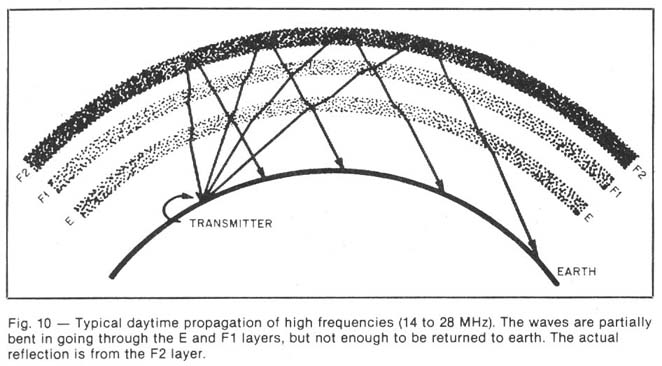AVIATION RADIO FUNDAMENTALS
By Major Rob Robinette
Electromagnetic Spectrum (diagram)
Radio waves are similar to visible light, light waves are just higher in
frequency
Radio waves are electromagnetic energy
Electric lines of force and magnetic lines of force, 90 degree angle to one another
Electric
lines of force define horizontal or vertical polarization
The C-141 "stinger" HF antenna is horizontally polarized. The VHF and UHF antennas are vertically polarized
Radio waves travel at the speed of light
186,000 miles per second
300 million meters per second
Frequency measured in Hertz –
cycles per second
Kilohertz
(kHz) thousands of cycles per second
Megahertz
(MHz) millions of cycles per second
Gigahertz
(GHz) billions of cycles per second
Wavelength – distance from wave peak to peak (example: 17 meter shortwave)
Sound 10
– 20,000 Hertz
Very Low Frequency (VLF) - Submarine communication
Low
Frequency (LF) – NDB 190 to 1750 kHz (1.75 MHz)
Medium
Frequency (MF) – AM radio broadcast (1210 kHz, 1.21 MHz)
High
Frequency (HF) – 3 MHz to 30 MHz (short-wave)
Very High
Frequency (VHF) – 30 MHz to 300 MHz (FM broadcast 93.7 MHz)
Ultra High
Frequency (UHF) – 300 MHz to 3 GHz (cell phone 870 MHz, GPS 1.5 GHz)
Super High Frequency (SHF, a.k.a. microwaves) - > 1 GHz (satellite 4.4 GHz and up)

ADF Radio
Automatic Direction Finder
Low and Medium Frequency
AM and CW (continuous wave or carrier)
190 to 1750 kHz (1.75 MHz)
- Non-Directional Beacons (NDB) normally 190 - 535 kHz CW
Can tune in AM broadcast stations
VHF Radio
AM 108 - 138 MHz
Navigation 108 - 118 MHz, voice 118 - 136 MHz
DME 962 - 1213 MHz (1.213GHz); glide slope 329.15 - 335 MHz; outer, middle, inner markers 75 MHz



